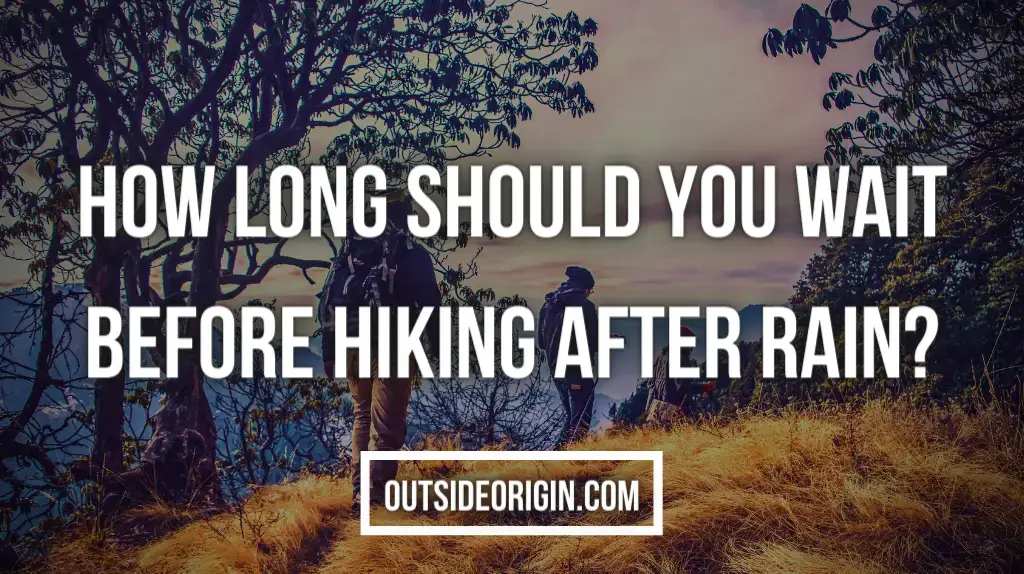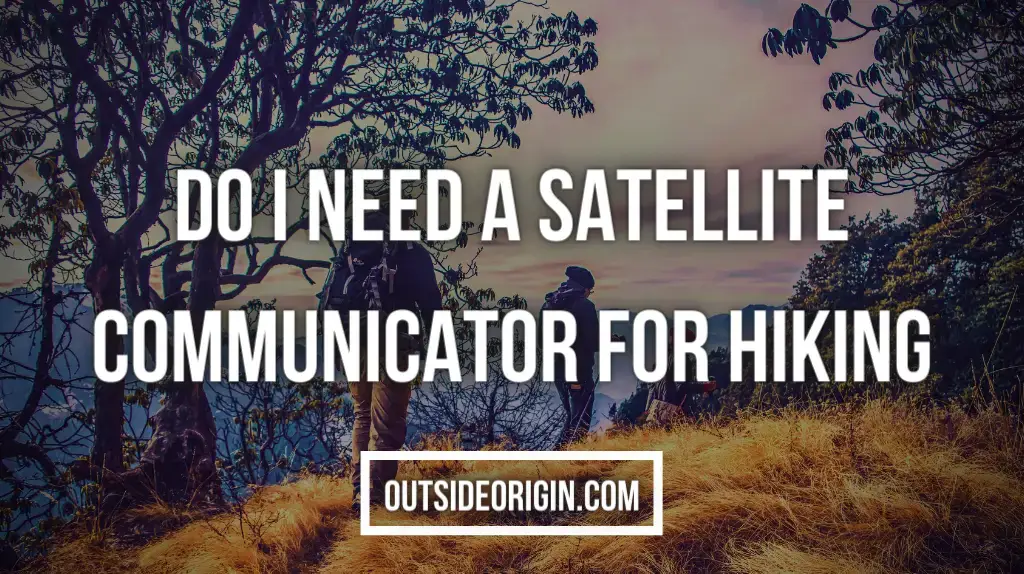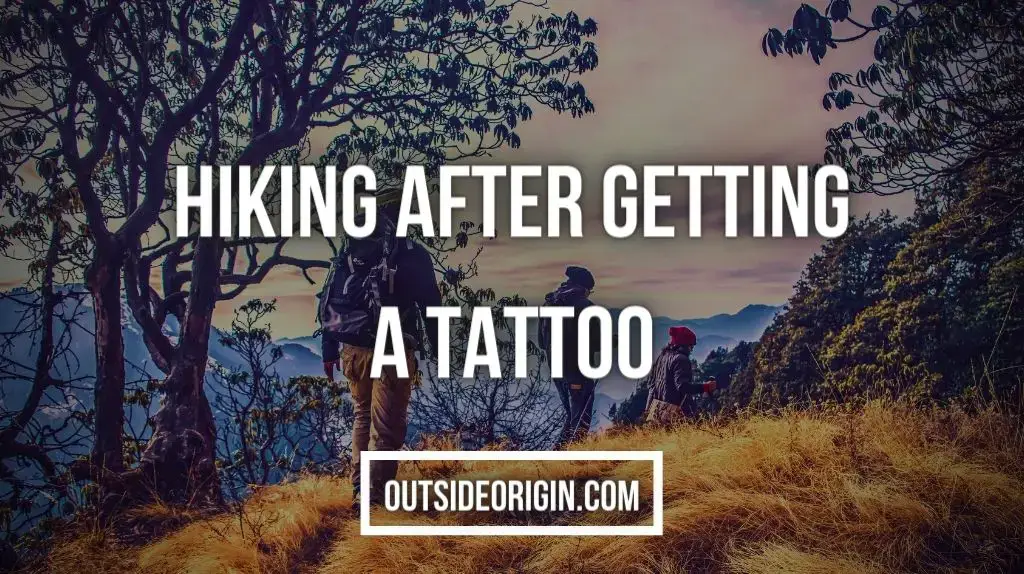Is hiking out of the question if the weather isn’t cooperating with us?
It’s not a good idea to go hiking in the rain if you aren’t prepared for all the possible hazards and don’t have the proper gear. Wait at least an hour after it has stopped raining before continuing your hike in the desert or plains because of the risk of flash floods. The dangers of hiking after rain will be discussed in this post, and we’ll provide you with advice on how to prepare for trekking after rain.
How Long Should You Wait To Hike After Rain?
Your gear, the trail’s conditions, and the weather prediction all have an impact on how long you should wait to resume or begin your trip after it has rained.
1. High Winds
Whole trees are in motion, making it difficult to walk against the wind; it will impact your stability; avoid exposed ridgelines or cliff edges. First-degree frostbite can occur if the temperature drops below 0°F.
2. Mountains
Mountaineering is more difficult. Rockier, older mountains at higher elevations tend to dry up faster after rain, making them safer to hike in wet conditions. While waiting to resume your hike, you must still keep an eye out for several elements.
3. Woodlands
Hiking in relatively flat woodlands doesn’t necessitate waiting for long periods if you’re equipped properly. Waterproof clothing and trekking poles are your best bets for avoiding hypothermia and slipping on the slick ground in these locations.
4. Flat Areas
Wait at least an hour after it has stopped raining before continuing your hike in the desert or plains because of the risk of flash floods.
5. Avalanches
Avalanches can occur at any time, so be aware of any local avalanche warnings.
6. Landslides
Landslides are another common hazard. Landslides can occur even after the rain has stopped, so be on the lookout for local authorities’ landslide warnings.
7. Jammed Rivers & Creeks
Wait a few hours after a big storm to ensure that all river crossings are passable and are not overflowing any further.
8. Thunderstorms
The dramatic shifts in the weather are common occurrences during this period. Wait till the weather is clear before continuing your hike.
9. Slippery Ground
Surface ice is thick. Even after the rain has stopped, the ground can still be slick, so be careful where you walk and avoid risky trails where a minor slip could result in a long fall.
10. Lower Air Pressure
As more water vapor is in the air, the pressure drops and the oxygen concentration decreases. People will start to feel tired if their brains become overworked.
Is It Safe To Go Trekking After A Rainstorm?
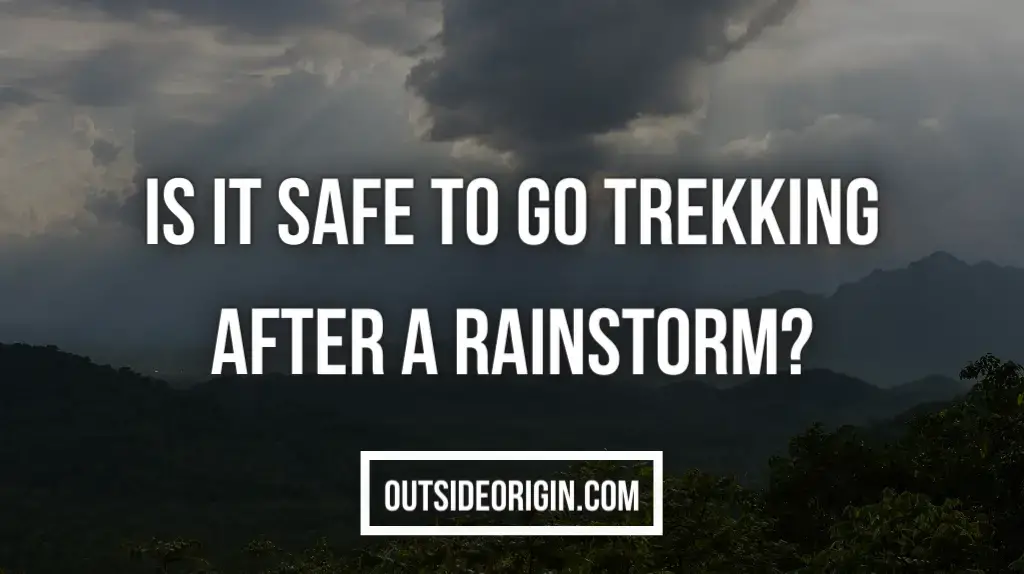
Hiking in the rain is generally safe if you’re prepared. Make sure you have the proper equipment to avoid hypothermia. Make sure your hiking route doesn’t offer any severe dangers when it rains, and then you can relax and enjoy your trip!
Depending on where you are trekking, whether it’s a tiny slot canyon or thin ledges and slippery rocks, the difficulty level can vary. People lose their lives every year in places like Zions Park and other desert locales with tiny canyons. Even in non-desert areas, large rainstorms in the mountains can sometimes wash down a stream bed and rise swiftly. Your best strategy is to familiarise yourself with the hiking area and understand its inherent dangers.
If you follow all of the advice above, hiking after rain or even while it’s still pouring is completely safe.
Pros Of Hiking After A Rainstorm
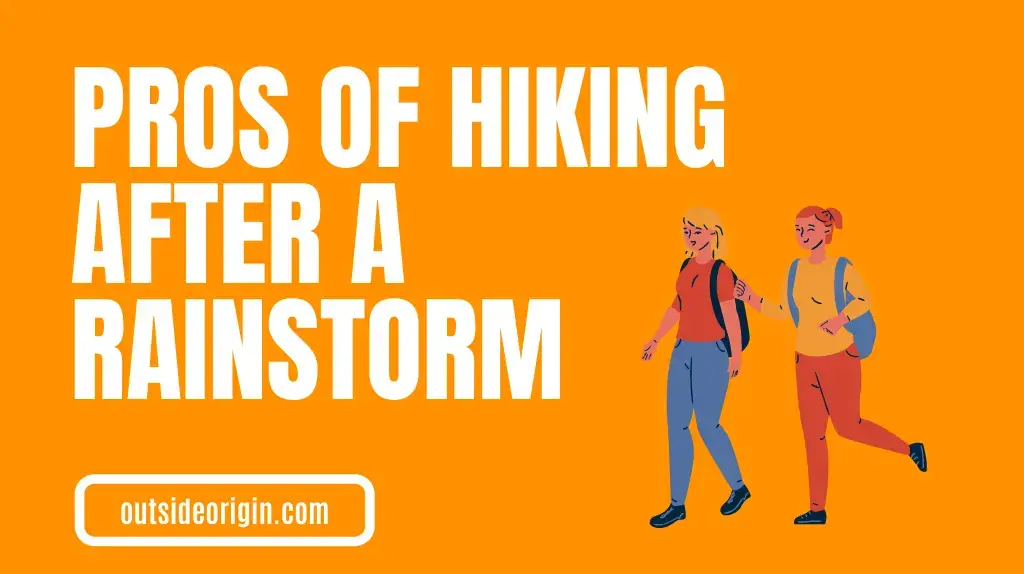
1. Blissful Ambience
This implies that you’ll have to deal with sunburns, sweat, and additional water while hiking in hot weather. Hiking just after a rainstorm can be ideal if you don’t want to become drenched in sweat.
To be safe, bring a few layers of clothing in case it is colder than you think or are used to. If it rains again, bring a hoodie or an extra pair of socks to keep you dry and toasty.
2. A Solitary Adventure
This sense of seclusion isn’t limited to deserted pathways; it also occurs in more confined natural regions like woodlands when it rains.
You lose track of time and become completely immersed in the world around you as if you’ve travelled across the globe.
3. Stunning & Diverse Experiences
It’s one of the key reasons hiking is so enjoyable because of the breathtaking views from the trail or the peak. Awe-inspiring views of mountains and trails are something that most of us have experienced at some point.
The beauty of rain is that it transforms the views you’re accustomed to viewing. After a storm, there are views that most people never get to see. Make sure to snap a few shots of the trees, mountains, and lakes when you observe how the rain changes them.
4. Wide Open Trails
There will be far fewer hikers if it is raining or has just stopped raining. Because of this, you’ll be able to choose from a wide range of options and make the most of your vacation time.
Try out that popular trail you’ve always avoided because it’s always so crowded. Even if you do come upon a fellow hiker who shares your interests, you’ll likely be the only one there.
5. A Natural Purifier
Rainwater and humidity are good for your hair and skin, even if it seems natural to seek protection and avoid getting wet. Nature has a cure for all of your problems.
Cons Of Hiking After A Rainstorm
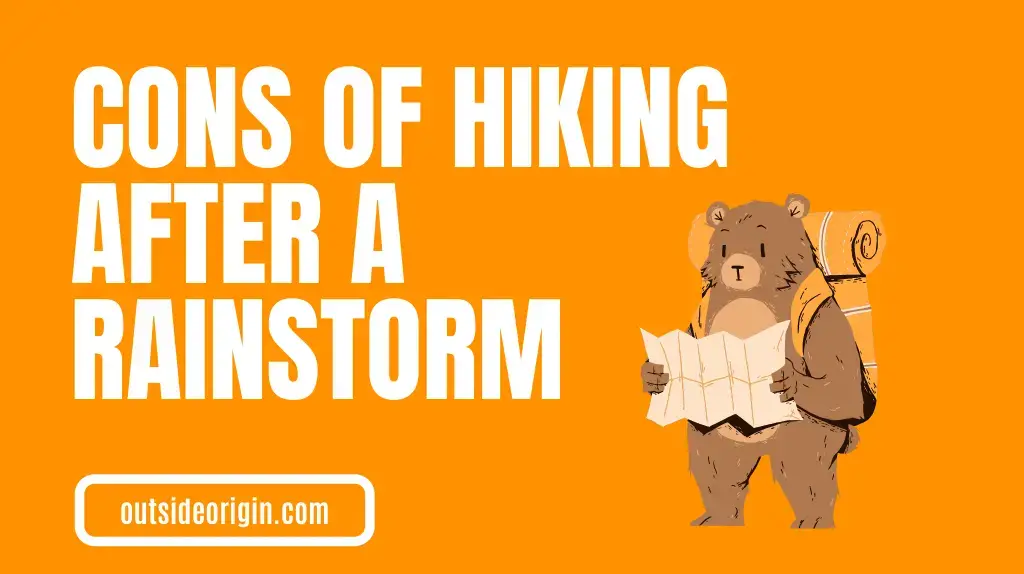
1. Unsteady Surfaces
It’s significantly more difficult to keep your footing when walking on the damp and muddy ground. Sporting traction-enhancing boots or shoes can assist prevent falls.
2. Sogginess
Wet and muddy trails can be found in most areas that are suitable for trekking. Trying to get about out there without losing traction is difficult if you don’t have the proper gear.
In addition, once you return from your hike, you’ll have more work to complete. Wet and muddy boots, dirty clothes, and wet and muddy gear need to be cleaned and dried.
Check out my ideas on how to stay dry no matter how wet it is out if you decide to go hiking.
3. Risk Of Hypothermia
We are talking about a major deal here. It’s possible for hikers who aren’t prepared or who misjudge hypothermia’s consequences to find themselves amid a bad surprise.
In the event of hypothermia, a pleasant trip can swiftly turn into a hazardous and life-threatening situation. Take the time to make sure you’re prepared for the cold before you head out on the trails.
4. Uncomfortable Wet Gearset
Many people go hiking to get some fresh air, but how can they do that when the rain is constantly interrupting their train of thought, especially given how wet they are?
There is no such thing as a rain-proof outfit, no matter how many layers and umbrellas you bring. You’ll get wet, whether it’s from the rain or your sweat because you’re wearing rain boots that don’t have enough room for your feet to breathe.
Of course, a nice hot shower when you get home will take care of this, but it may be discouraging to have your relaxing outing interrupted by your wet socks and shoes.
5. Damp Feet
When trekking in the rain, your feet are subjected to a lot of wear and tear. Brittle skin appears when your feet are wet. It’s the combination of sweat and rain plus the friction of your feet that causes blisters.
When your feet are damp, you’re more likely to have fungal growths like an athlete’s foot. You may get trench foot if you hike for a long amount of time with wet feet. Pain, swelling, and eventually, tissue death can result from this dangerous disorder.
What Equipment Do You Need to Hike After Rain?
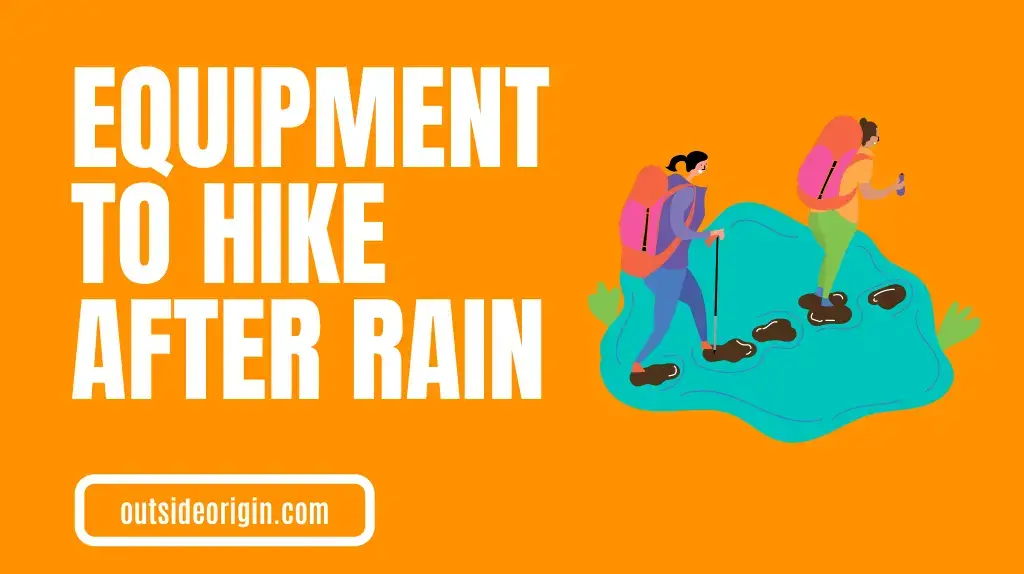
To ensure your safety while out on a hike following a storm, read the preceding suggestions carefully.
1. Avoid Cotton
For your apparel, always choose synthetic, wool, or other moisture-wicking textiles rather than cotton. Cotton loses its insulating characteristics after soaking up a lot of water, so it’s not a good choice for hiking.
2. Waterproof Hiking Boots
Shoes that dry fast and are ventilated may be a preferable choice if the weather is warm. A pair of waterproof shoes is a better idea in the fall and winter months when your feet are most susceptible to being numb and rewarming the slowest of all the season’s footwear options. If you’re trekking in temps that are slightly above or below freezing, you must wear insulated, waterproof footwear to avoid hypothermia.
3. Polyester Is Preferable Over Wool
If you know it’s going to rain, opt for synthetic insulation over down in your jacket and sleeping bag. Even though down is more lightweight, wet down loses all of its insulating characteristics. Even if your synthetic insulation becomes wet, it will keep you warm.
4. Restrict Your Reach
There’s always a danger that a storm will return if you walk out on the trails shortly after it rains. Choosing a track that is not too long is advised in case of adverse weather during your hike.
The trail can become perilous if the storm resumes, so keep your car nearby in case you need to retreat. You should be able to turn around and wait for another day before resuming the hike.
5. Keep Your Hands Dry By Wearing Moisture-Wicking Gloves
It’s critical to keep your fingers warm if you’re going to be hiking for a long period in the rain. For this, waterproof coatings on synthetic gloves, as well as taped seams, are a necessity. Even if they become wet, they’ll keep your fingers toasty.
6. Essential Dry Clothes
We’ve already discussed the need of storing your gear, including your sleeping bag, pad, tent, and electronics, in dry sacks or pack liners. After the day, you should also pack some dry clothing for a quick change of clothes. As long as you have a thermal top, thermal trousers, and some dry wool socks, you should be fine for the night.
7. Purchasing Trekking Poles
If you’re planning to go hiking after a rainstorm, the ground is likely to be quite slick. You’ll be able to dodge dirt and puddles more easily if you use trekking poles to preserve your balance. I highly recommend you try out the Montem Life Ultra Strong Trekking Poles here.
8. Be Prepared With Blister Supplies
After a hike in the rain, you might acquire some new blisters if your feet are wet. Blisters form much more easily when your feet and socks are damp. Keep some Leukotape on hand in case you get any new blisters.
What Are The Benefits Of Rain Covers?
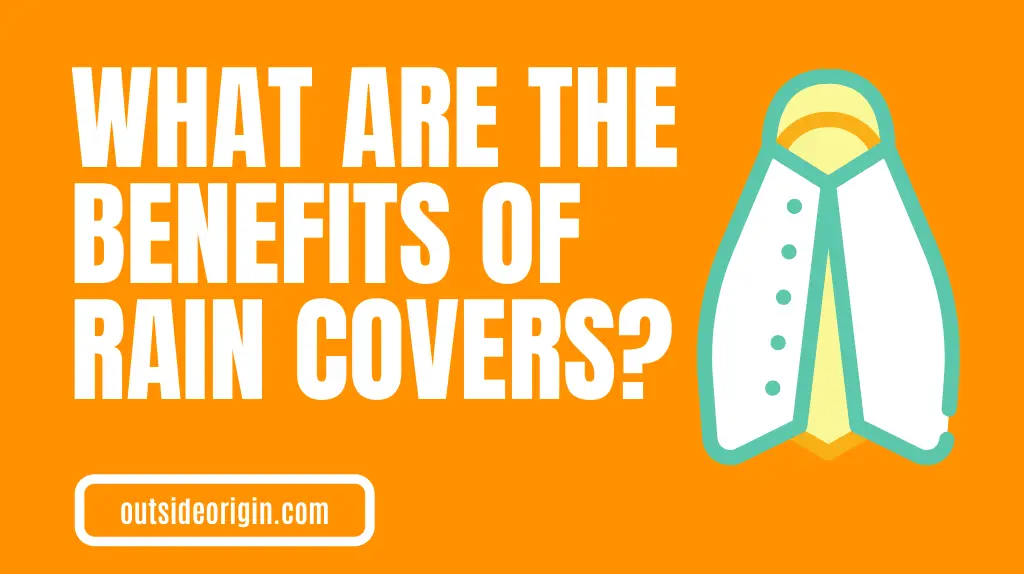
In addition to keeping your things inside your backpack dry, rain covers may keep your goods on the exterior dry as well. You can use a rain cover to keep items like a tent, food, a stove, and clothing dry and undamaged if you place them in the exterior pockets of your pack out of preference or lack of space.
Conclusion: Final Thoughts!
Hiking in the rain is a wonderful experience. You can take a deep breath easier since the air is so clean. Listening to raindrops fall on trees can help you unwind. The paths are less busy as an additional plus.
At the same time, the rain has its own set of difficulties that you must conquer. Everything about it is a mess, including the weather. Hopefully, these tips will assist you to avoid any complications while hiking after a downpour.
Can You Do Me A Small Favor?
I have put a lot of time & effort into writing this post to provide you with the best info out there.
It’ll help me out if you could consider sharing it on your social media networks. You are also allowed to take any photo you want from my blog as long as you credit and link back!
Appreciate it! ❤️️
I am Jordan James, I am a writer and researcher over here at Outside Origin. I love spending time in nature and just being outside. I have hiked many trails such as the Appalachian Trail, Pennine Way, Half Dome to name a few.

